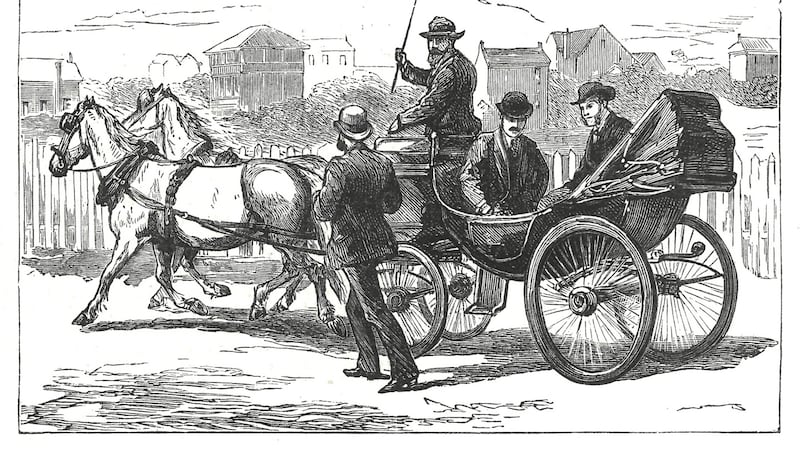A man hanged for the killing of the one of the most notorious informers in 19th century Ireland was a victim of a miscarriage of justice, a new book claims.
Patrick O'Donnell was executed in London on December 17th, 1885, for the murder of James Carey, who turned Queen's evidence against the Invincibles.
The Invincibles killed the chief secretary to Ireland Lord Frederick Cavendish and the permanent under secretary at the Irish Office (the most senior civil servant in Ireland) Henry Burke in May 1882. The Phoenix Park murders, as they were called, led to one of the biggest police investigations in Irish history.
It ended when Carey gave evidence in the dock and five Invincibles implicated in the killings were hanged as a result.
Carey became the most reviled man in Ireland and was put into the 19th century equivalent of a witness protection programme.
He, his wife and seven children were on their way to South Africa to start a new life. There they fell in with the O'Donnell family who were also making their way to South Africa.
A rumour went around the vessel, Kinfauns Castle, that the informer Carey was on board, but nobody knew what he looked like. The rumour appeared in the Cape Argus newspaper when the ship landed. Another passenger, Robert Cubitt, was shown an old newspaper in Capetown which included sketches of Carey.

O'Donnell then knew the man he had befriended on the voyage was the informer. On board the Melrose, a steamer sailing between Cape Town and Durban, he shot Carey dead.
In his book The Queen v Patrick O’Donnell, journalist and author Seán Ó Cuirreáin says he has uncovered evidence which showed the judge misdirected the jury in the murder trial.
The evidence from a British Home Office file suggests that an Old Bailey judge, Mr Justice Denman, who heard the case against Patrick O'Donnell withheld crucial information in court which indicated that the jury believed that the killing was "without malice aforethought".
A killing “without malice” would equate to manslaughter rather than the mandatory sentence of hanging which arose in cases of murder “with malice aforethought”.
Mr Ó Cuirreáin suggests that Mr Justice Denman misled the court when he amended and misrepresented the wording of a direct question from the jury which showed they were inclined to believe the killing was “without malice’.
Mr Justice Denman told the court that the jury, as they concluded their deliberations having heard all the evidence, had submitted a question to him in writing in which they had sought a definition of “malice aforethought”.
However, the actual question posed by the jury which was not read to the court is included in a file on the O’Donnell case in the British National Archive which was ordered to be ‘closed until 1985’.
The handwritten note of the jury’s question in blue pencil was attached to 61 pages of meticulous notes made by by the judge during the course of the two-day trial.

The question suggests that the jury had no problem in understanding the concept of “malice aforethought” but rather sought to ascertain if they reached a verdict of “murder without malice aforethought” would the judge accept that verdict. The text of the question was: “If we find the prisoner guilty of murder without malice aforethought can you take that verdict?”
“It is highly significant that the judge misrepresented the jury’s question, withheld it in court and replaced it with an unasked question of his own,” says Mr Ó Cuirreáin. “This was a critical deflection by him which left the defence team in the dark and paved the way to a guilty verdict.”
The Queen v Patrick O'Donnell is also the title of the feature-length drama-documentary commissioned from independent production house ROSG by TG4.
It will have its first festival screening in Ireland at the Galway Film Fleadh between July 20th-25th.
The Queen v Patrick O’Donnell: The Man who Shot the Informer James Carey is published by Four Courts Press priced €17.95.











